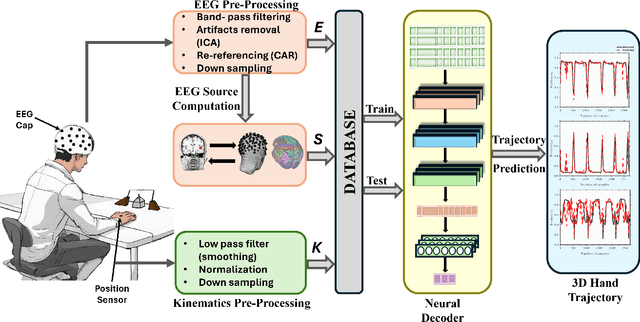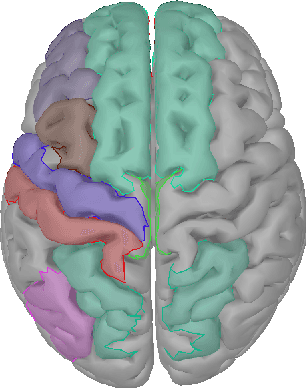ESI-GAL: EEG Source Imaging-based Kinematics Parameter Estimation for Grasp and Lift Task
Paper and Code
Jun 18, 2024



Objective: Electroencephalogram (EEG) signals-based motor kinematics prediction (MKP) has been an active area of research to develop brain-computer interface (BCI) systems such as exosuits, prostheses, and rehabilitation devices. However, EEG source imaging (ESI) based kinematics prediction is sparsely explored in the literature. Approach: In this study, pre-movement EEG features are utilized to predict three-dimensional (3D) hand kinematics for the grasp-and-lift motor task. A public dataset, WAY-EEG-GAL, is utilized for MKP analysis. In particular, sensor-domain (EEG data) and source-domain (ESI data) based features from the frontoparietal region are explored for MKP. Deep learning-based models are explored to achieve efficient kinematics decoding. Various time-lagged and window sizes are analyzed for hand kinematics prediction. Subsequently, intra-subject and inter-subject MKP analysis is performed to investigate the subject-specific and subject-independent motor-learning capabilities of the neural decoders. The Pearson correlation coefficient (PCC) is used as the performance metric for kinematics trajectory decoding. Main results: The rEEGNet neural decoder achieved the best performance with sensor-domain and source-domain features with the time lag and window size of 100 ms and 450 ms, respectively. The highest mean PCC values of 0.790, 0.795, and 0.637 are achieved using sensor-domain features, while 0.769, 0.777, and 0.647 are achieved using source-domain features in x, y, and z-directions, respectively. Significance: This study explores the feasibility of trajectory prediction using EEG sensor-domain and source-domain EEG features for the grasp-and-lift task. Furthermore, inter-subject trajectory estimation is performed using the proposed deep learning decoder with EEG source domain features.
 Add to Chrome
Add to Chrome Add to Firefox
Add to Firefox Add to Edge
Add to Edge